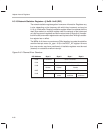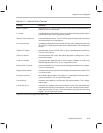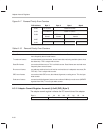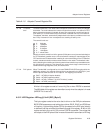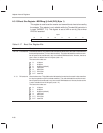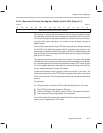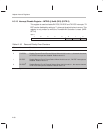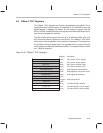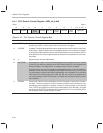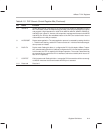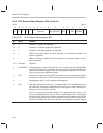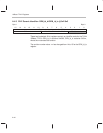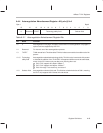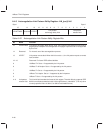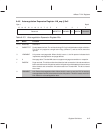
10Base-T PHY Registers
A-40
A.4.1 PHY Generic Control Register–GEN_ctl @ 0x0
Byte 0Byte 1
Reserved
COL
TEST
DUPLEX
AUTO
RSRT
ISOLATEPDOWN0LOOPBKRESET
01234567
89101112131415
AUTO
ENB
Table A–19. PHY Generic Control Register Bits
Bit Name Function
15 RESET PHY reset: Writing a 1 to this bit causes the PHY to be reset. This bit is self-clearing. The
bit returns a value of 1 when read until the internal reset is complete.
14 LOOPBK Loopback: This bit enables/disables internal loopback within the PHY device. When this
bit is set to a 1 (default), data is internally wrapped within the PHY and does not appear
on the network. When this bit is set to 0, data is transmitted to and received from the net-
work. While the PHY is in the loopback state, all network lines are placed in a nonconten-
tious state.
13 0 Speed selection bit: Not implemented
12
AUTOENB Autonegotiation enable: This bit enables/disables the autonegotiation process. If this bit
is clear, the link shall be configured via the DUPLEX bit and the PHY will implement the
standard 10Base-T link integrity test. The default value of this bit is enabled.
If this bit is set to one, the PHY engages in autonegotiation when a link-fail condition is
detected. The link will not be valid until the AUTOCMPLT bit is set to one. The PHY does
not automatically configure itself after autonegotiation has completed. Driver software
must determine from the contents of the AN_adv, AN_lpa, and AN_exp registers what
the correct setting for DUPLEX should be, or whether the link partner does not imple-
ment 10Base-T.
11
PDOWN Power-down: When this bit is set (default), the PHY is placed in a low-power consump-
tion state. The time required for the PHY to power up after this bit is cleared can vary
considerably, primarily based on whether a crystal or crystal oscillator is connected to
FXTL1/FXTL2 (around 50 ms for the former, and less than 2 ms for the latter). It is good
practice to set the RESET bit after this time to ensure the PHY is in a valid state (this is
not necessary when a crystal oscillator is used).



